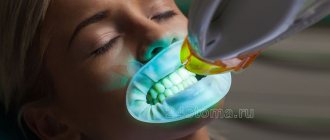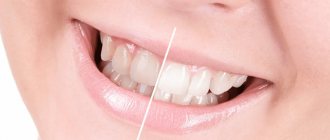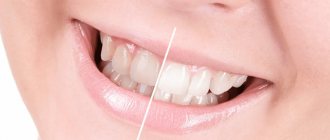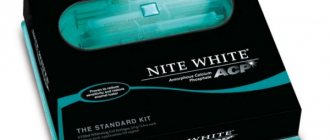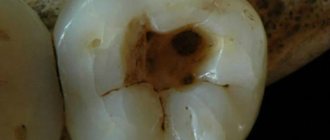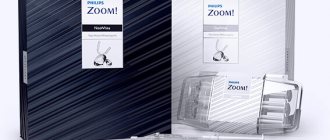A snow-white smile is the dream of every person. And everyone is interested in safe teeth whitening. Many people have heard about bad experiences from friends and the Internet and are afraid to repeat these mistakes. But the procedure has been well studied, but it is important to know which Moscow clinic can provide truly high-quality and gentle teeth whitening.
Is whitening safe?
What is teeth whitening? This is a cosmetic procedure in which the color of dentin changes (namely, the color of the tooth depends on it) - lightening by several tones under the influence of active substances. Whether it is safe or not depends on the professionalism of the dentist, as well as on the technologies and drugs that are used for these purposes (these must be registered drugs, modern methods). If we are talking about whitening at home, everything is the same, only instead of a doctor, it is the rationality of a person.
ROOTT Clinic expert on the most important things when whitening
In general, whitening is a fairly safe procedure if the teeth have good mineralized enamel, healthy gums and good oral hygiene.
Properties of soda
Sodium bicarbonate can disinfect surfaces as an antiseptic, which is good for whitening
The unique properties of soda have made the product popular in various areas of human life, this is explained by the three main properties of the powder: antiseptic, regenerating, cleansing.
Antiseptic properties
Sodium bicarbonate can disinfect surfaces as an antiseptic.
This property has a positive effect on enamel whitening. Thanks to him, the procedure prevents harmful bacteria from entering the oral cavity.
Regenerating properties
Sodium accelerates skin regeneration by affecting metabolic processes in cells. When teeth whitening, it has a beneficial effect on the condition of the gums and improves their condition.
Cleansing properties
Large powder particles are capable of removing a thin layer of the surface. This applies to both plaque and tooth enamel. Soda owes its instant effect to this property.
Indications and contraindications
Most often, the patient prescribes the indication for whitening to himself - he is not satisfied with the aesthetic appearance of especially the front teeth, which are visible when smiling. I want it to be whiter and more dazzling.
Darkening of the enamel can also occur due to frequent intake of coffee, cigarettes, dark berries and even medications.
But there are also a number of contraindications
:
- pregnancy and lactation;
- age under 18 years;
- allergies to drugs;
- the presence of fillings, crowns, veneers (they simply do not whiten);
- bracket systems, staples;
- cancer;
- hypersensitivity;
- active caries, periodontitis or other oral diseases;
- wedge-shaped defect (dentin exposed);
- rapid abrasion of enamel;
- in some cases diabetes mellitus.
You should definitely consult with your doctor about indications and contraindications so that together you can choose a safe method for teeth whitening. And of course, carry out a complete sanitation of the oral cavity to avoid uneven color after the procedure.
Before-after photos of teeth whitening at the ROOTT clinic
How to do this without harm?
Using baking soda as a tooth powder has a lot of advantages:
- This remedy neutralizes pathogenic microflora of the oral cavity, resulting in the disappearance of bad breath.
- Sodium bicarbonate allows you to polish tooth enamel even in the most difficult to reach places.
- Baking soda relieves gum inflammation.
To care for your teeth, choose a brush of suitable hardness.
At the same time, sodium bicarbonate powder can cause harm if handled without taking precautions. It should be remembered that the drug is contraindicated in the following disorders:
- Bleeding gums.
- Inflammatory processes in the oral cavity.
- Sensitive tooth enamel.
The absence of contraindications does not mean that soda can be safely used as many times as desired. Healthy teeth can also be damaged if whitened without care. After all, sodium bicarbonate destroys not only harmful, but also beneficial microflora. In addition, soda is often mixed with other aggressive substances - hydrogen peroxide, citric acid, fruit juice, etc. Such combinations have an aggressive effect on tooth enamel, so they should be handled with extreme caution.
For whitening, it is recommended to use a brush with soft bristles that will gently massage the gums. A cotton or gauze swab is also suitable for this purpose.
Whatever tool you use for cleaning, it is important to do it carefully without touching your gums, because the mixture can be very irritating to them.
The site sympaty.net studied many different sources and collected the best recipes for brushing your teeth with soda to whiten them. They have different effectiveness, but they all have one thing in common: they cannot be used more than once a week. Some recipes can be used once every few months.
Remember that bleaching should not be done often!
What harm can bleaching cause?
The safest teeth whitening will be under the supervision of a professional dentist. Indeed, with inept management and the wrong approach, a number of troubles can arise:
- Negative effects on tooth enamel of incorrectly selected concentrations of bleaching agents. This is both increased sensitivity and an increase in the microporosity of its structure. Over time, the ingestion and accumulation of food dyes may cause the tooth color to become even darker than before;
- chemical burn of gum tissue due to improper isolation;
- uneven lighting.
Why does tooth enamel darken?
There can be many reasons for darkening of tooth enamel. The most common include:
- Failure to comply with hygiene rules. If you don't brush and floss your teeth, plaque, consisting of food debris and pathogenic bacteria, accumulates on the surface of your teeth. Over time, the plaque thickens, creating a dark “shell” that changes the natural color.
- Smoking. Smokers most often suffer from rapid yellowing of the enamel, which occurs due to deposits of resins contained in tobacco smoke. Smoking negatively affects not only the condition of the enamel, but also provokes the development of caries, stomatitis and other problems.
- Frequent consumption of coffee, black tea, wine and juices. These drinks negatively affect the color of teeth due to the large number of dyes. You can drink coffee and tea, but you must use a special toothpaste.
What whitening methods are there?
The dentist will advise which teeth whitening is safe for each patient individually. But everything that takes place under the supervision of a doctor will definitely not harm - there is no doubt about it, especially when using the latest technologies, delicate compounds and modern developments.
Professional teeth whitening methods:
- Photobleaching;
- laser whitening;
- whitening gel only;
- hardware method.
The first two methods use a lamp or laser as a catalyst for the action of the whitening gel.
Photobleaching, for example, ZOOM, enhances the effect of active hydrogen peroxide, helping to quickly break it down into free radicals - oxygen atoms. of up to 10 tones occurs.
. With proper care, the results last for several years.
The laser procedure differs in that instead of a light beam, a laser beam acts. It can heat the surface, which causes sensitivity (everything is in the hands of a professional doctor, since the advantage of a laser is accuracy), and copes well with changing color by 10-12 tones
and maintaining it for up to 5 years. The downside is the high cost of the method.
Dentists are still arguing about what is the safest teeth whitening, and whether laser and light are necessary for the best results. But it has been proven that the method of applying gel without using them is also effective. Opalescence technology with 40% hydrogen peroxide in the gel is cheaper in price and has proven itself in aesthetic dentistry.
A simple dental cleaning at the clinic is often sufficient for many people. After removing stones and plaque, the teeth become several shades lighter. Using one of these methods:
- Air-Flow hardware cleaning (the principle is similar to a sandblasting machine, but instead of sand, soda);
- ultrasound.
You can be satisfied with the result of your renewed smile.
Teeth whitening with coconut oil and baking soda
Baking soda combines with coconut oil to create a sticky, abrasive paste that effectively removes plaque. In addition, coconut oil soothes irritation in the mouth and saturates the gums with essential acids and microelements.
- Take 2 tbsp. coconut oil and mix with the same amount of baking soda powder.
- Add 5-7 drops of peppermint essential oil to the mixture to improve the taste of the improvised paste.
- Use the paste once a day. Store the finished mixture in the refrigerator, as the oil quickly deteriorates in warm conditions.
Is it possible to whiten teeth safely at home?
The market offers more and more varieties of home whitening methods, whether they are safe or not - everything is individual. And the course usually lasts 10-20 days. However, not everyone is of any use.
Manufacturers offer:
- Whitening strips;
- mouth guards with active composition;
- felt-tip pens, markers;
- toothpastes with whitening effect.
All products contain the same hydrogen peroxide, but in a much lower concentration. Therefore, it will be possible to lighten and visually change the color of the enamel by 1-2 tones.
Rather, this is a lightening procedure, that is, you can safely bleach if you agree to change the shade by just a couple of tones, and are willing to spend a lot of time for a relatively small result.
But using professional products at home is not recommended. Is it dangerous.
How to whiten teeth with baking soda at home?
Teeth whitening at home with sodium bicarbonate is a simple procedure that does not require special skills. The constant desire to improve the result has given rise to several dozen ways.
Cleaning with soda
The whitening procedure with soda without impurities is carried out in two ways:
- Using dry soda: Apply a moderate amount to a bandage, toothbrush or fingers.
Gently brush your teeth, then rinse your mouth with water. Important: the bandage or cotton swab must be damp. - Using a concentrated solution: Dissolve baking soda in water until the powder dissolves. Brush your teeth with a cotton swab dipped in the mixture. Rinse with water.
This is a simple teeth whitening option that works for everyone. To improve the taste sensation during the procedure, soda is sometimes mixed with toothpaste.
Gently brush your teeth with dry soda, then rinse your mouth with water.
Baking soda + toothpaste
Baking soda and toothpaste are mixed in 1:1 proportions. The mixture is applied to a toothbrush or cotton pad. Next is the most gentle process of brushing your teeth.
Dentists are often skeptical about this method, since soda can eliminate the effect of individual components of the paste. This does not affect whitening in any way.
Baking soda and toothpaste are mixed in proportions 1:1
+ tooth powder
Tooth powder has the same properties as toothpaste and itself acts as a whitener. Some powders already contain baking soda, so it's best to read the label carefully before mixing the two.
If there is no sodium bicarbonate in the ingredients, you can mix the powder and soda in a 1:1 ratio, apply it to a damp cotton or gauze swab and carefully rub it over the surface of the teeth.
Some powders already contain baking soda, so it's best to read the label carefully before mixing the two.
+ hydrogen peroxide
This mixture is aggressive in nature. It negatively affects tooth enamel. Dentists do not recommend resorting to this method to eliminate the risk of tooth decay.
But in isolated cases, when there is an urgent need for quick whitening, it is allowed to resort to cleaning with such a mixture.
To do this you need:
- Mix 3% peroxide solution and baking soda to obtain a thick paste.
- Apply the mixture with your fingers or a cotton swab to your teeth, being careful not to touch your gums - this will cause irritation.
- Massage for no longer than two minutes and rinse with water.
Important: using a toothbrush is strictly prohibited, as in this case the effect on the enamel will be irreversible.
Dentists do not recommend using hydrogen peroxide to eliminate the risk of tooth decay
+ lemon
The use of this method is dangerous for dental health, but to a lesser extent. For such bleaching, a pinch of baking soda is applied to gauze, a cotton pad or fingers, and the powder is moistened with a few drops of lemon juice on top. Carefully brush your teeth. Wash off with water.
You can whiten your teeth using baking soda and lemon juice.
Baking soda + hydrogen peroxide + lemon
This mixture is suitable for weekly home whitening and provides immediate visible results.
To prepare it correctly you need:
- Mix 0.5 teaspoon each of baking soda and lemon juice with a few drops of 3% hydrogen peroxide solution.
- Apply the mixture to your teeth using your finger or a cotton swab and leave for 2-3 minutes.
Important: avoid getting the mixture on your gums, as this may cause irritation. - Spit, rinse mouth with warm water.
The mixture is suitable for weekly home whitening and produces immediate visible results.
+ strawberry
This recipe requires fresh strawberries, so it is considered seasonal.
To prepare you need:
- Mash 2-3 berries and mix with half a teaspoon of soda powder.
- Apply the mixture to a soft-bristled brush or cotton pad and spread it over the surface of your teeth in a circular motion.
- Leave for 5 minutes.
- Rinse your mouth and brush your teeth with toothpaste.
Mash 2-3 berries and mix with half a teaspoon of soda powder
+ vinegar
The taste of vinegar is unpleasant, so not everyone will like this method of whitening a smile. But those who decide will appreciate the result.
Whitening procedure using this method:
- Pour baking soda into a bowl and add acetic acid until the consistency of toothpaste is achieved.
- Apply the mixture to your teeth using a brush, fingers or a cotton swab.
- Wait 5-10 minutes.
- Rinse your mouth with water and brush your teeth as usual.
The taste of vinegar is unpleasant, so not everyone will like this method of whitening a smile.
+ foil
To use this method you need foil, salt, baking soda and toothpaste. This is a long method and requires precision and patience. But the result justifies the means.
Instructions:
- Make molds out of food foil to cover your teeth.
- Prepare the mixture: mix toothpaste, baking soda and salt in proportions 2:1:1.
- Place the paste into foil molds and place them on your teeth. Leave for 15 minutes.
- Rinse your mouth thoroughly and brush your teeth.
Place the paste in foil molds and place them on your teeth.
+ salt
This is the most gentle way to achieve a snow-white smile, because the soda crystals are not rubbed into the teeth - they are dissolved. Whitening occurs by rinsing the mouth with a solution.
As a result, in addition to lightening the enamel, pathogenic microbes that live in the mouth are destroyed. There is no specific recipe: salt and soda are taken in such quantities that the solution is neither weakly nor highly concentrated. Rinse for a minute or two.
This is the most gentle way to achieve a snow-white smile because the soda crystals are not rubbed into the teeth.
+ coconut oil
Coconut oil is used to prevent oral diseases. It disinfects mucous membranes, prevents caries, and destroys bacteria that cause plaque.
To improve the effect, the oil is mixed with soda in a 1:1 ratio. Then apply the mixture to the brush and gently brush your teeth.
Coconut oil is used to prevent oral diseases
Safe whitening steps
- It is necessary
to carry out professional oral hygiene a few days - Isolation of soft
gum tissue. If you isolate the gum incorrectly, the patient will receive a severe burn, which will lead to complications. Therefore, safe teeth whitening in dentistry should only be carried out by an experienced doctor specializing in this field. - A special gel
based on hydrogen peroxide is applied. It is updated every 15 minutes: it is removed from the surface of the teeth (as it develops its properties) and a new portion is applied. The gel is changed three times. - Activation of the gel using a special lamp
. The dentist places a special lamp, the light of which will activate the gel. It is necessary to speed up the procedure and reduce it to 1 hour. The lamp has a cold LED light that does not heat the enamel structure and the procedure is comfortable for the patient. - Removing gel
from the enamel surface and all insulating materials from the gum surface. - Procedure for strengthening teeth
. A gel is applied that strengthens tooth enamel and reduces sensitivity.
Whitening is carried out in the smile zone, from 5 to 5 teeth of the lower and upper jaw. The procedure takes on average 1 hour
. Anesthesia is not given. This is necessary so that there is direct contact between the patient and the doctor, and the former can report if discomfort or pain occurs. Otherwise, you may miss the moment when something went wrong: a burn to the mucous membrane, too aggressive exposure to the material, a person’s low pain threshold.
Preliminary actions
Before starting the procedure, it is important to prepare the oral cavity for the aggressive effects of soda:
- If your usual diet is not filled with products containing fluoride and calcium, you need to introduce them into the menu a month in advance
If your usual diet is not filled with products containing fluoride and calcium, you need to introduce them to the menu a month in advance. These include fermented milk products, cereals, seafood, apples, grapefruits, potatoes and greens.
- Fluoride strengthens tooth enamel. Special toothpastes, which are sold in pharmacies, will help increase its content. Daily use will strengthen the tooth shell, and whitening with soda will not cause negative consequences.
- Macroelements also ensure dental health. There are not enough of them in the daily diet - vitamin complexes come to the rescue.
The main goal of these actions is to strengthen tooth enamel, because it takes the brunt of aggressive environmental influences.
Perhaps improving the condition of the shell will completely eliminate the need for bleaching. Ignoring the above points often leads to the destruction of enamel and caries.
Teeth Whitening Pencil –
A teeth whitening pencil is the most ineffective and pointless way to spend your free time waiting for your teeth to lighten. Such pencils not only make teeth lighter, but also temporarily recolor their white color due to the white dye they contain. A teeth whitening pencil of the “Crestal” type (Fig. 20) costs more than 900 rubles at retail, with a purchase price of 100-150 rubles. This already says a lot...
Reviews
Ilya, 32 years old, Magnitogorsk. I smoke a lot and like to treat myself to strong coffee. Naturally, the enamel quickly darkens and turns yellow. I went to the dentist - the effect was short-lived, but I spent a lot of money. I read reviews on the forums about using baking soda for whitening and decided to try it. Despite the untested method, the result was very surprising: there was a huge difference before and after whitening, the teeth became much whiter, and the enamel was not damaged.
Elizaveta, 26 years old, Saratov. I learned about teeth whitening with baking soda from a friend. I thought it was nonsense, because I always used soda only for baking. When I tried it, I was very surprised by the results - the color of my teeth changed a lot. I really haven’t tried bleaching with vinegar, I used coconut oil and baking soda.
The video shows homemade teeth whitening recipes.
We recommend studying the article on how to rinse your mouth with baking soda for toothache and gum inflammation.
Whitening toothpastes
All toothpastes remove surface plaque from enamel because they contain mild abrasives. Some toothpastes with whitening properties contain mild polishes or chemical ingredients to provide additional effectiveness in removing plaque and stains. However, with the help of whitening toothpastes, you can only remove surface plaque and lighten your teeth by only one tone, while in a dental office, using professional whitening systems, you can lighten your teeth by 3-7 tones. If the paste contains abrasive particles, you should not use it constantly, as you can injure your tooth enamel.
Rinse liquids
Whitening liquids are one of the newest products for at-home teeth whitening. Like most mouthwashes, they freshen breath, help reduce plaque, and prevent gum disease. But these products also include ingredients, such as low concentrations of hydrogen peroxide, that whiten teeth. Manufacturers claim that to obtain the desired result, it is necessary to use the liquid for 12 months, daily, twice a day before brushing your teeth. However, the rinse may not be as effective as using other whitening products because the whitening liquid only contacts the teeth for a short period of time (only 2 minutes compared to the 30 minutes required for most strips).
Below is a summary of some of the home whitening systems available on the market. The numbers indicating the concentration of the active substance given by manufacturers are not always correct. Sometimes the concentration is exaggerated for marketing purposes.
Lightening with soda and strawberries
This unusual method will help whiten your teeth and feel a pleasant taste:
- You will need 2-3 ripe strawberries. It is better to choose ordinary garden strawberries - the concentration of nutrients and acids in them will be much higher than in berries from the store.
- Mash the berries until smooth and mix with a pinch of baking soda.
- Distribute the resulting mixture over the surface of the teeth. This is a fairly mild product, so leave the mixture for 5-10 minutes to achieve the desired effect.
- Rinse your mouth and brush your teeth with fluoride toothpaste.
Summary – the advantages of professional home whitening
Both at-home and professional teeth whitening have been studied in many clinical studies, with interesting results. For example, it was found that the shorter the whitening course/procedure, the faster the original color of the enamel returns. Those. The disadvantage of professional whitening methods such as Zoom (where the entire procedure takes 1 hour) is the rapid color rebound.
That is why all these patients are still prescribed home whitening systems - to maintain the results of professional whitening. If the patient refuses, then within a few months the color of the teeth returns to their original state. Therefore, you should not think that home whitening products are less effective than professional ones. The products we listed above (for example, Opalescence and Crest) really allow you to whiten your teeth at home without harming your teeth. We hope that our article was useful to you!
Sources:
1. Dental education of the author of the article, 2. Based on personal experience with whitening, 3. National Library of Medicine (USA), 4. American Academy of Cosmetic Dentistry (USA), 5. https://www.realself.com/, 6. https://crest.com/, 7. https://www.opalescence.com/.
What causes tooth sensitivity: main reasons
Tooth sensitivity (hyperesthesia) significantly impairs a person’s quality of life. He constantly experiences unpleasant sensations and discomfort when his teeth are exposed to cold or hot temperatures, sweet or sour foods.
What causes this condition? The main factors that increase tooth sensitivity are the following:
- the formation of cracks and chips on tooth enamel increases the sensitivity of the tooth if appropriate treatment is not carried out;
- Improper brushing of teeth increases the risk of developing sensitivity. For example, sudden movements with a brush lead to thinning of the enamel layer, which in turn weakens the dentin;
- when gums recede, tooth roots are exposed, which significantly increases the teeth’s susceptibility to external influences;
- the age factor influences hyperesthesia. The most sensitive teeth are in people aged 25-30 years. During this period, careful and careful handling of teeth is necessary.
Another reason for excessive tooth sensitivity is genetic predisposition.
Is it possible to whiten sensitive teeth? Such procedures are not contraindicated; they just need to be carried out using special means and using the most gentle methods possible.

